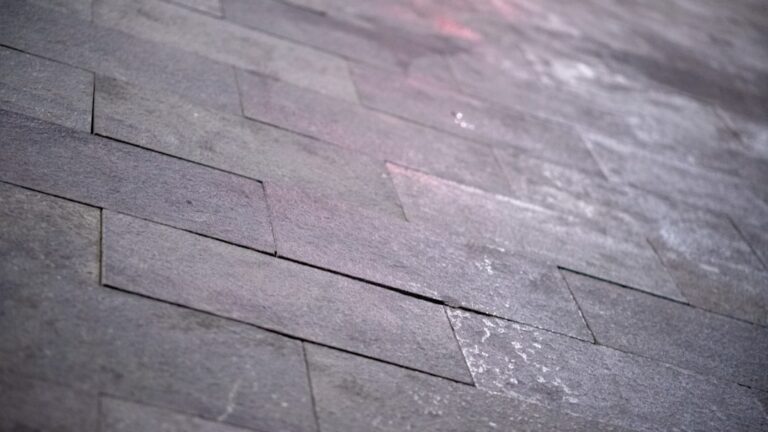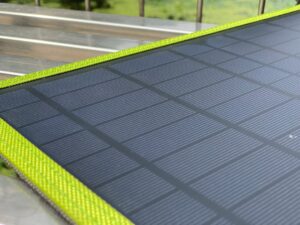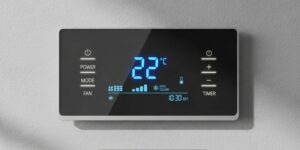Advanced backing systems represent a significant evolution in flooring technology, designed to enhance the performance and longevity of various flooring materials. These systems serve as the foundational layer that supports the visible surface of the floor, providing stability, comfort, and durability. By integrating innovative materials and engineering techniques, advanced backing systems can improve sound insulation, moisture resistance, and overall structural integrity.
This understanding is crucial for architects, builders, and homeowners alike, as it lays the groundwork for selecting the right flooring solutions that meet specific needs and preferences. The complexity of advanced backing systems often goes unnoticed by the average consumer, yet their impact on flooring performance is profound. These systems can be composed of various materials, including foam, rubber, and composite materials, each engineered to address specific challenges such as thermal insulation or sound dampening.
As the demand for high-performance flooring solutions continues to grow, understanding the intricacies of these backing systems becomes essential for making informed decisions that enhance both aesthetic appeal and functional performance.
Key Takeaways
- Advanced backing systems provide enhanced support and stability for resilient floors, improving overall performance and longevity.
- Resilient floors are crucial for withstanding heavy foot traffic and maintaining a visually appealing space, making advanced backing systems essential for durability.
- Types of advanced backing systems include cushioned, reinforced, and multi-layered options, each offering unique benefits for different applications.
- The benefits of advanced backing systems include improved comfort, noise reduction, moisture resistance, and enhanced dimensional stability.
- When choosing advanced backing systems, factors to consider include the type of flooring material, installation method, maintenance requirements, and environmental impact.
The Importance of Resilient Floors
Resilient floors have gained popularity in both residential and commercial settings due to their versatility and durability. Unlike traditional flooring options, resilient floors are designed to withstand heavy foot traffic, resist stains, and maintain their appearance over time. This makes them an ideal choice for environments such as hospitals, schools, and retail spaces where durability is paramount.
The importance of resilient floors extends beyond mere aesthetics; they contribute significantly to the overall functionality and safety of a space. Moreover, resilient flooring options often incorporate advanced backing systems that enhance their performance characteristics. For instance, these backing systems can provide additional cushioning underfoot, reducing fatigue for individuals who spend long hours standing.
They also play a critical role in sound absorption, making resilient floors an excellent choice for multi-story buildings where noise reduction is a priority. As such, the integration of advanced backing systems with resilient floors not only improves their physical properties but also elevates the user experience in various environments.
Types of Advanced Backing Systems
There are several types of advanced backing systems available on the market today, each tailored to meet specific flooring requirements. One common type is the foam backing system, which offers excellent cushioning and sound absorption properties. This type of backing is particularly beneficial in residential settings where comfort underfoot is a priority.
Foam-backed resilient floors can significantly reduce noise transmission between rooms, creating a quieter living environment. Another popular option is rubber backing systems, known for their durability and moisture resistance. Rubber-backed flooring is often used in commercial spaces such as gyms and hospitals due to its ability to withstand heavy use while providing a slip-resistant surface.
Additionally, composite backing systems combine various materials to achieve a balance of strength, flexibility, and insulation properties. These systems are increasingly favored in modern construction due to their adaptability to different flooring types and environmental conditions.
Benefits of Advanced Backing Systems
| Benefits of Advanced Backing Systems |
|---|
| Improved vehicle safety |
| Reduced risk of accidents |
| Enhanced maneuverability |
| Increased productivity |
| Lower maintenance costs |
The benefits of advanced backing systems are manifold, making them an attractive choice for both new constructions and renovations. One of the primary advantages is enhanced comfort. With the right backing system in place, resilient floors can provide a softer feel underfoot, reducing strain on joints and muscles.
This is particularly important in settings where individuals are required to stand for extended periods, such as retail stores or healthcare facilities. In addition to comfort, advanced backing systems contribute significantly to the longevity of flooring materials. By providing a stable foundation that absorbs impact and reduces wear and tear, these systems can extend the life of the floor itself.
Furthermore, many advanced backing systems are designed to be moisture-resistant, which helps prevent issues such as mold growth and warping that can arise from water damage. This added layer of protection not only preserves the aesthetic appeal of the flooring but also ensures a healthier indoor environment.
Factors to Consider When Choosing Advanced Backing Systems
When selecting an advanced backing system for resilient floors, several factors must be taken into account to ensure optimal performance. First and foremost is the intended use of the space. High-traffic areas may require more robust backing systems that can withstand significant wear and tear, while residential settings might prioritize comfort and aesthetics.
Understanding the specific needs of the environment will guide the selection process. Another critical factor is compatibility with the chosen flooring material. Not all backing systems are suitable for every type of flooring; therefore, it is essential to consult with manufacturers or flooring experts to determine which options will work best together.
Additionally, considerations such as installation methods and maintenance requirements should be evaluated. Some advanced backing systems may require specialized installation techniques or ongoing maintenance that could impact long-term costs and usability.
Installation and Maintenance of Resilient Floors with Advanced Backing Systems
The installation process for resilient floors with advanced backing systems can vary depending on the type of backing used and the specific flooring material chosen. Generally, proper preparation of the subfloor is crucial to ensure a successful installation. This may involve cleaning, leveling, and moisture testing to create an ideal foundation for the new flooring.
Once the subfloor is ready, the advanced backing system can be laid down according to manufacturer specifications. Maintenance of resilient floors with advanced backing systems is relatively straightforward but requires regular attention to preserve their appearance and functionality. Routine cleaning with appropriate products will help prevent dirt buildup and staining.
Additionally, periodic inspections should be conducted to identify any signs of wear or damage to the backing system itself. Addressing these issues promptly can prevent more significant problems down the line and extend the life of both the backing system and the resilient floor.
Advanced Backing Systems for Different Types of Flooring Materials
Advanced backing systems are designed to complement a variety of flooring materials, each offering unique benefits tailored to specific applications. For instance, luxury vinyl tiles (LVT) often utilize foam or felt backing systems that enhance comfort while providing sound insulation. This combination makes LVT an excellent choice for residential spaces where aesthetics and functionality are equally important.
In contrast, ceramic tiles may benefit from cementitious or rubber backing systems that provide additional support and moisture resistance. These types of backing systems help mitigate cracking or shifting that can occur due to temperature fluctuations or heavy loads. By understanding how different advanced backing systems interact with various flooring materials, designers and builders can create spaces that are not only visually appealing but also highly functional.
Environmental Impact of Advanced Backing Systems
As sustainability becomes an increasingly important consideration in construction and design, the environmental impact of advanced backing systems cannot be overlooked. Many manufacturers are now focusing on creating eco-friendly backing options made from recycled materials or sustainable resources. These innovations help reduce waste while still providing high-performance solutions for resilient floors.
Additionally, advanced backing systems can contribute to energy efficiency within buildings by improving insulation properties. By reducing heat loss or gain through floors, these systems can help lower energy consumption for heating and cooling purposes. As awareness grows regarding environmental responsibility in construction practices, selecting advanced backing systems with a lower ecological footprint will become a priority for many builders and homeowners alike.
Innovations in Advanced Backing Systems
The field of advanced backing systems is continually evolving as new technologies emerge and consumer demands shift. Recent innovations include the development of smart backing systems equipped with sensors that monitor moisture levels or temperature fluctuations in real-time. These intelligent solutions can alert building managers or homeowners to potential issues before they escalate into costly repairs.
Furthermore, advancements in material science have led to the creation of lighter yet stronger backing options that maintain performance without adding unnecessary weight to flooring installations. This not only simplifies transportation and installation but also enhances overall building efficiency by reducing structural load requirements. As these innovations continue to unfold, they promise to reshape the landscape of resilient flooring solutions.
Case Studies: Successful Implementation of Advanced Backing Systems
Several case studies illustrate the successful implementation of advanced backing systems across various sectors. In a recent commercial project involving a high-traffic retail space, designers opted for a rubber-backed resilient floor system that provided exceptional durability while enhancing safety through slip resistance. The result was a visually appealing environment that met both aesthetic goals and functional requirements.
Another notable example comes from a healthcare facility that integrated foam-backed vinyl flooring throughout patient areas. The cushioning properties of the foam not only improved comfort for patients but also reduced noise levels in busy corridors—an essential factor in promoting a healing environment. These case studies highlight how thoughtful selection and implementation of advanced backing systems can lead to successful outcomes tailored to specific needs.
Future Trends in Advanced Backing Systems for Resilient Floors
Looking ahead, several trends are poised to shape the future of advanced backing systems for resilient floors. One significant trend is the increasing emphasis on sustainability and eco-friendliness in product development. As consumers become more environmentally conscious, manufacturers will likely focus on creating innovative backing solutions that minimize environmental impact while maintaining high performance.
Additionally, advancements in technology will continue to drive innovation within this sector. The integration of smart technologies into advanced backing systems may become more prevalent, allowing for enhanced monitoring capabilities that improve maintenance practices and overall building performance. As these trends evolve, they will undoubtedly influence how architects, builders, and homeowners approach flooring solutions in both residential and commercial settings.
In conclusion, advanced backing systems play a crucial role in enhancing the performance and longevity of resilient floors across various applications. By understanding their importance, types, benefits, and environmental impact, stakeholders can make informed decisions that lead to successful flooring installations tailored to specific needs and preferences.
FAQs
What are resilient floors with advanced backing systems?
Resilient floors with advanced backing systems are flooring materials that are designed to be durable, flexible, and resistant to wear and tear. They are often used in high-traffic areas and commercial spaces due to their ability to withstand heavy use.
What are the benefits of resilient floors with advanced backing systems?
Resilient floors with advanced backing systems offer a range of benefits, including enhanced durability, easy maintenance, resistance to moisture and stains, and improved comfort underfoot. They are also available in a wide variety of styles and designs, making them suitable for various aesthetic preferences.
How are resilient floors with advanced backing systems different from traditional flooring materials?
Resilient floors with advanced backing systems are engineered to provide superior performance and longevity compared to traditional flooring materials. They are often constructed with advanced backing systems that enhance their stability, flexibility, and impact resistance.
What are the common applications of resilient floors with advanced backing systems?
Resilient floors with advanced backing systems are commonly used in commercial settings such as healthcare facilities, educational institutions, retail spaces, and hospitality environments. They are also suitable for residential use, particularly in areas that experience high levels of foot traffic.
How can I maintain resilient floors with advanced backing systems?
Maintaining resilient floors with advanced backing systems is relatively easy. Regular sweeping and mopping with a mild detergent are typically sufficient to keep the floors clean. It is important to avoid using harsh chemicals or abrasive cleaning tools that could damage the flooring material.






